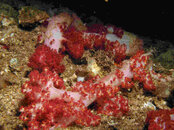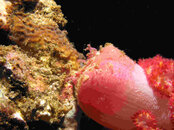DontLieToMe
Contributor
- Messages
- 211
- Reaction score
- 0
I just returned from a trip that included diving at Ko Ha and Hin Daeng. Another thread reported coral death at Hin Moung and Hin Daeng. This same type of coral death is taking place at depths of 45+ feet at Ko Ha. The corals appear to fall off and litter the sea bed and then are washed to sea. I have included two pictures showing several corals of this type scattered on the sea bed as well as a close up of the coral anchoring point. The extent of coral death at Hin Daeng was very extensive.






